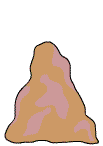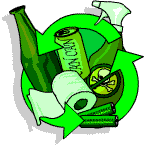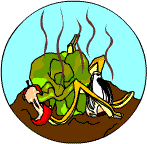The Art of Alchemy
Created | Updated May 21, 2002
To the Medieval Alchemists1, the world was animated. Matter, and the material world, had a living soul and there was a deep interconnectedness between all things on all levels of existence. The material imagination contained in bodies and substances, like the moon and water, was a basis for fully participating with the world of nature, of having an intimate relationship with its phenomenal presence, its movements and rhythms. 
Believing that spirit was contained in the material world and not outside it, as the Orthodox Church believed, the alchemists' raw material or prima materia was in the affairs of the ordinary, mundane world. For the alchemist, it was the prime matter for psychological realisation. Today, however, the matter is in our projected material. It is in everything we are unable to 'see through,' everything we take unquestionably, uncritically for 'real'.
The Alchemical Opus
In the popular imagination, the alchemist is a seeker of gold, driven by personal profit and greed to extract that precious substance from base metals. From a modern day perspective, attached as we are to economics and material wealth, this reading of the alchemist's exploits are understandable. But while there were those "puffers" who did indeed mint coins and sought riches and fame, some were at least after an 'inner' gold - often referred to as the Philosopher's Stone, Golden Flower, elixir of Life and so on.
Their quest, in psychological terms, equates with Jung's goal of Individuation, the process of self-development in which an individual integrates the many facets of the psyche to become him or her Self, and thus attain psychic wholeness. Alchemy, the depth psychology of an earlier age2, therefore required infinite patience, subtlety in appreciation and dedication to the Art, often at great personal expense and sacrifice. In archetypal psychology, alchemy's bizarre fantasies and afflicted imagery, as metaphoric processes, provide an ideal portrait of soul-work.
The work or opus of alchemy can be seen as an inner repetition of the cosmology outside - except, on the psychological level, the alchemical process was a complete reversal of our contemporary notion of biological evolution, as an expanding, outer process on the physical level. Its final 'goal' was inorganic matter, either a metal (notably, gold), a mineral, a crystal or a stone.  This is very dissimilar to the seven-day creation story in Genesis, for instance, where man is the crown of creation, the top of the evolutionary ladder. In other words, alchemy's operations deliberately broke down the natural order of things in order to renew creation. It was a work against nature, an opus contra naturam, in order to free the psyche from its material and natural view of itself and the world.
This is very dissimilar to the seven-day creation story in Genesis, for instance, where man is the crown of creation, the top of the evolutionary ladder. In other words, alchemy's operations deliberately broke down the natural order of things in order to renew creation. It was a work against nature, an opus contra naturam, in order to free the psyche from its material and natural view of itself and the world.
This reversal or return to find original essence, the gold in the heart of matter, may be explained by man's relation to the material world of nature. Alchemy grew out of a long tradition that saw every aspect of material life as animated. The way in which the alchemist collaborated with nature became the basic rhythm of their work.
Mircea Eliade3 traces the relationship of alchemy and metallurgy of primitive man to mineral substances. Minerals, he asserts, shared in the sacredness attached to Mother Earth. As the source of life and fertility, ores 'grew' and 'ripened' in the belly of the earth like embryos. Galleries of mines and caves were her vagina. The miners and the metalworkers in extracting these ores from the earth were like obstetricians co-operating in the work of nature. Through metallurgy, man felt that he was ultimately able to assist in the processes of growth taking place in the bowels of the earth.
The alchemist, like the metallugist, in their labour and with the assistance of fire, pursue the transformation of matter, its perfection and transmutation. The whole operation of mining, its rites and mysteries, played upon the alchemist's imagination as a metaphor for the generative and degenerative powers of nature; its ability to constantly renew and refashion itself. For example, the mythical belief that to ensure the 'marriage of metals' in the smelting process, a living being must be sacrificed in order to 'animate' the operation.  The soul of the victim then changes his human body for a 'new' body - a building or an object, for instance - which, in turn, animates it, gives it new life.
The soul of the victim then changes his human body for a 'new' body - a building or an object, for instance - which, in turn, animates it, gives it new life.
For new life to emerge there must be a corresponding death of the old. In following these natural fusions, like tempering of metals by the union of fire and water, you irrevocably changed the nature of the original substance. The dream of deformation enters the soul of the Smith as it does for the alchemist working with the elementary forces of nature.
The Materials, Vessels and Operations of the Alchemical Laboratory
For the alchemist, the world is read through substances, with alchemy itself being a background for entering the realm of imagination. The world was seen in terms of imagination interacting with concrete substances through impersonal, objective operations. The alchemist projected his psychic state onto matter and matter, likewise, projected its transformations onto the alchemist4. It was a dual process, a mirroring back of physical operations on substances, each one resonating with all human experiences hitherto lying dormant within the personal psyche. In a developmental sense, the work of the alchemist can be seen as a projection of their own psychic processes into the matter which they were trying to transform - from a 'lesser' substance, the prima materia (e.g. lead, earth, water or dung) into a more valuable substance (e.g. gold).
Operations called dissolution, putrefaction, mortification, coagulation, pulverizing, dessicating and so forth, like the materials and vessels used, were personified metaphors of psychological processes. Imaginative processes of dismemberment, torture, cannibalism, decapitation, flaying, poisoning; and images of monsters, dragons, unipeds, skeletons, hermaphrodites, etc. spoke a pathologised language5 recognising they worked simultaneously on both the soul in his materials and the soul in himself. In terms of substances, we find, for instance, Sulphur represented as the spirit Mercurius6, the inflammable face of the world soul (or anima mundi) often found in matter. More importantly, Hermes was said to be the Patron Saint of alchemy who guided the work.

The alchemical vessel was seen as both womb and tomb, a place for birth and a place for decay, but also a place for containment. In us the retort is the vessel of memory and imagination, holding events and fantasies where they can be subjected to the heat of passion and feeling or to the simmering of thought and reflection. In this retort, events of life decay, losing their literal form; but they also ferment, acquiring taste, bite, and body - a good cook of the psyche knowing the best combinations of temperature and time, when to let things simmer and when to bring them to the boil.
Jung and Alchemy
The famous Swiss Psychologist, Professor Carl Gustav Jung, who extensively studied alchemy, saw its metaphoric and substantive language, its symbolisms and operations, as a projection onto matter of archetypes and psychological processes that occur in the collective unconscious.
Believing that an individual's psychological state can be assessed alchemically, he took the four basic substances found in alchemy as metaphors for the way the personality operates in life. As a development of his Psychological Typology theory, this resulted in Jung's (often neglected) Alchemical Model of Personality. By the use of this model, he maintained that each of us has, in varying degrees, the following qualities corresponding to a specific alchemical substance: an inflammable, extravert, aggressive side (Sulphur); an introspective, introvert, bitterly wise side (Salt); a dense, depressive side (Lead); and, a volatile, evasive, reflective side (Mercury). The work of individuation, or the differentiation of self, was then to enact lengthy operations on these substances, as if doing alchemy on ourselves. Jung was also able to elucidate the stages of the alchemy and relate them to his own insights into the individuation process
As knowledge of these substances gets to the core of who we really are, as the essence of substance, so the process of individuation (as the attainment of self) is the psychological equivalent of the alchemist's quest for immortality. The Philosopher's Stone, also known as the 'diamond body' or 'white pearl,' represents the incorruptible nucleus of the personality, and which can be taken as the goal (gold) of alchemy. It is the divinity residing in matter - that which gives a sense of presence, permanence, and uniqueness - which can sustain us through the flux of life's changes.

From the Raw to the Cooked
Alchemy's operations were principally designed to liberate the soul from material entrapment. As Heraclitus of Ephesos (535-475 BCE) long ago observed, "it is death to become earth," where literal fixations in earthbound problems stop the soul's movement. What kills the flow and buries the soul needs dissolving in order to loosen and allow to rise into awareness our congealed fantasies, images and feelings. Alchemy's dissolution, like a baptism, involved a purification, a washing away of debris, allowing a clearer perception of essentials. This is similar to cathartic release of emotions, where tears give way to fresh insights.
One familiar alchemical motto - "perform no operation till all be made water" - refers to the state of dissolution as the foundation of the work. In these primal, transformative waters, 'imperfect,' gross matter is broken down, awaiting a cleansing or ablution of impurities that attach to it. Entering the 'waters' was a kind of death, it being necessary to let go where one has been stuck in order to regenerate soul and give to matters a new psychic sense.  This operation was symbolically represented as a regression to a pre-natal state, to the amniotic fluid of the mother's womb. Alchemical imagery shows a divine 'child' growing in the womb of the vessel through a 'psychic pregnancy', there to await a kind of regeneration through death7.
This operation was symbolically represented as a regression to a pre-natal state, to the amniotic fluid of the mother's womb. Alchemical imagery shows a divine 'child' growing in the womb of the vessel through a 'psychic pregnancy', there to await a kind of regeneration through death7.
As operations allied to death, dissolution and putrefaction produce images of weakness and sickness for the sake of psychic movement and soul-making. Such images were of major concern to the alchemist who believed that the Gods force themselves symptomatically into awareness, and that pathologizing was a divine process working in the human soul. Therefore, by reverting the pathology to the God, they recognised the divinity of pathology. Furthermore, pathologizing is a way of seeing, of gaining 'psychological insight,' which may explain why alchemists, like many great artists and writers, often suffered for their art8.
The initial nigredo or 'blackening' stage of alchemy tells us that it starts with a 'mess', the prima materia being the symptom that may drive one to seek therapeutic help.  It is the crisis, issue, wound and failure that forces one to begin to question one's nature, examine life, and explore deeper meanings. 'Washing out' the immersed 'shadow' matter can therefore be read as a metaphor for breaking down old habits, attitudes and beliefs that obscure psychic insight, and have lost psychic significance. Withdrawal of psychologically naive projections and the loosening of resistances is also the decay (putrefaction) of idealisations that have moulded our reality. By dissolving rigid ego boundaries, we can begin to challenge the ideas we carry about ourselves and the world, questioning the 'truths' we unequivocally take to be reality.
It is the crisis, issue, wound and failure that forces one to begin to question one's nature, examine life, and explore deeper meanings. 'Washing out' the immersed 'shadow' matter can therefore be read as a metaphor for breaking down old habits, attitudes and beliefs that obscure psychic insight, and have lost psychic significance. Withdrawal of psychologically naive projections and the loosening of resistances is also the decay (putrefaction) of idealisations that have moulded our reality. By dissolving rigid ego boundaries, we can begin to challenge the ideas we carry about ourselves and the world, questioning the 'truths' we unequivocally take to be reality.
Alchemy insists that the way to create soul is through 'the mess' - psyche's garbage becoming the raw material which is cooked, reflected upon, in order to see the fantasies operating in our 'messy' lives. Turning base metal into gold is therefore to see the value in our symptoms, our 's**t' as yielding great riches. It is not about transforming or closing-off symptoms, which, from an alchemical perspective, is the mistake of spiritual, growth-based psychologies. Alchemy attempts to 'see through' what lies hidden in the matters of life; in our repressed unconscious mind where contamination takes place.
The 'waters' were sometimes described as 'stinking,' alluding to the shadow side of personality. Within these 'stinking' waters, slumbering in the soul, lie our repressed contents, those inferior
'unacceptable' aspects of one's nature that we try to hide and disown. The stink may emanate from the rotting matters of our worldly affairs, the pollution and corruption that is all too familiar and pervasive. This becomes a matter for soul, of Hecate, the compost-maker of the underworld, whose temples are the rubbish-tip and household dustbin, who elicits our psychopathy, sees the value and brings to life the morbistic perspective of soul - this being at the very heart of alchemy
Washing away the dung from the unconscious is to lose the gold with the dross, which, as a heroic labour, reminds of Hercules' task in the underworld of cleaning the Augean stables and shifting the s**t by diverting two rivers. By comparison, alchemy's operations were much more subtle. The alchemist was aware that when our style of consciousness is too ego-centred, there is a tendency to literalise the fantasies that shape our reality into 'hard' problems needing to be solved. Only by 'seeing through' the illusion of problems into the reality of fantasies can we to shift from the heroic to the imaginal ego.
Treading the Middle Path
The middle path of soul is reflected in the two-fold nature of alchemy - the engagement with the concrete materials and operations in the laboratory while maintaining an enthusiasm for research and new ideas in the library9. The alchemist also gave equal attention to regulating the fire (keeping it alive) and watching the changes taking place in the substances. Too much or too little attention either way could spoil the work.
The mystery of alchemy was about bringing together apparent opposites and incommensurables - the inner-outer, the mind- body, subject-object, masculine-feminine - into a paradoxical relationship10. To achieve the union of opposites, alchemy attempted to move in two directions: keeping things both apart and together. The alchemists had an interesting motto for this: "Solve et Coagula", Dissolve and congeal! Treading a middle path stemmed from a concern to keep soul separate from body and spirit (mind), to rescue soul from manic flights into spirit (from psychological inflation and transcendence), and to draw soul out of the confines of materialism. When soul is lost in either of these extremes, gone too are the benefits it brings to experience. For instance, without soul, relationship and connectedness to people suffers. Though physically present, we may walk through busy, crowded areas of daily life like a stranger who sees it all as if it were happening behind the glass panels of a museum.
This emphasises the importance to soul not to lose touch with body and spirit. Soul begins in the moist, solid earth, the realm of ordinary experience. Without this embodied world there could be no soul. We need the tangles and problems, our hurt feelings, pains and depressions, just as much as we need our exhilarations, joys and pleasures, of everyday life.
The Final Curtain
The dawning age of Enlightenment in the 17th Century, followed by the advent of modern scientific pragmatism and its unyielding adherence to facts, sounded the death toll for all things considered mystical, magical and irrational. Earlier, in Western civilisation, Christianity brought with it a morality that eventually destroyed pagan practices, nature worship and folk crafts. The alchemists fell foul of the Church because they felt it was in the power of man himself to achieve the divine condition, and therefore rejected the Christain dogma of original sin and the fallen nature of man. Alchemy, viewed as witchcraft and heresy by the Church Fathers, therefore threatened the vision of Christian universal harmony, and was officially denounced as a superstitious, heathen pursuit11.
With classical imagination stultified, 'animism'12 gave way to 'anthropomorphism'13 and humanism as the dominant worldview. As the many spirits inhabiting nature began to fade, everything became a reflection of, and message for, human affairs. The most crushing consequence of Christianism's elevated ideology of ordering, controlling and defeating nature was the loss of soul.
In a largely de-spiritualised, de-animated world, these nature spirits are said to reside in the dark shadows of human rational consciousness. Psychologically, as Jung observed, the gods, deities and spirits have become our modern day diseases. Repressed, they exist in our personal lives as moods, odd fascinations, delusions, erotic fantasies and whatever else lurks in the depths of the unconscious. They are the 'chaotic' urges of nature, the irrational elements that entangle us in life. We are trapped in the materiality of our being, with nature reduced to the human experience of it.
Alchemy, as a psychological discipline, may have come to an end long ago, but the alchemical processes within the psyche continue as before. If the Gods have become our diseases, and the formal cause of our afflictions are mythical persons (the incarnation of fantasy events), then rather than having lost the alchemical model, we can see many of its processes alive today in the form of psychopathology.
